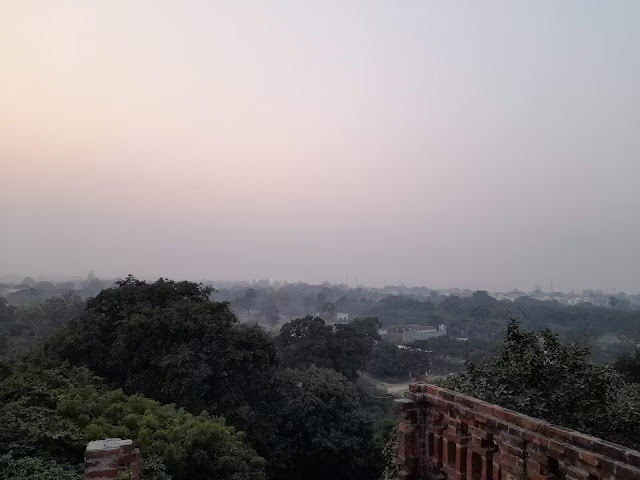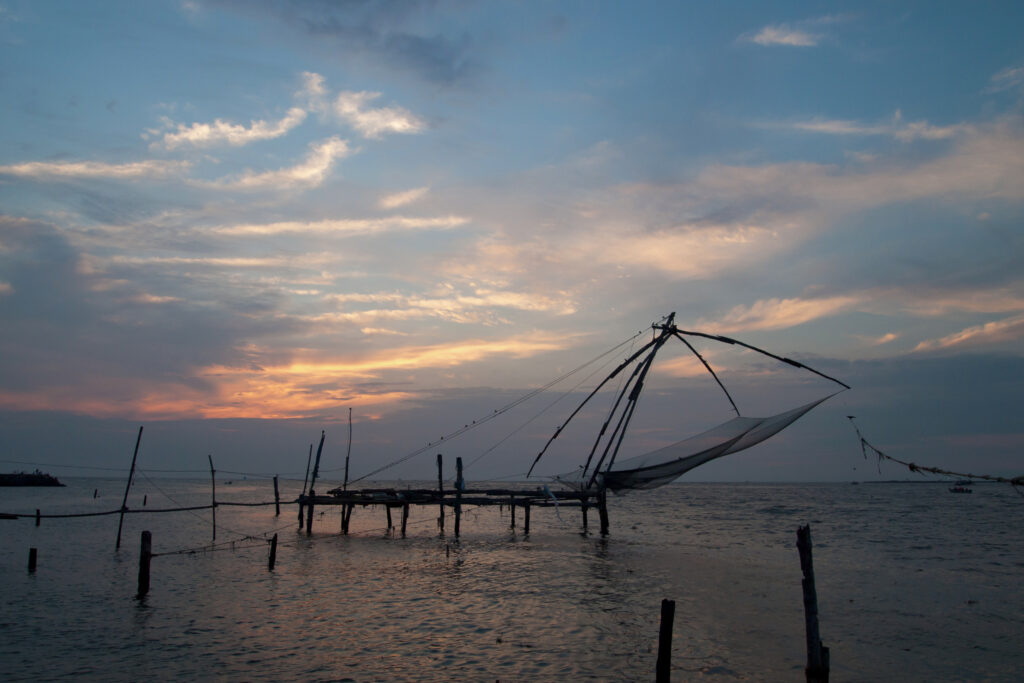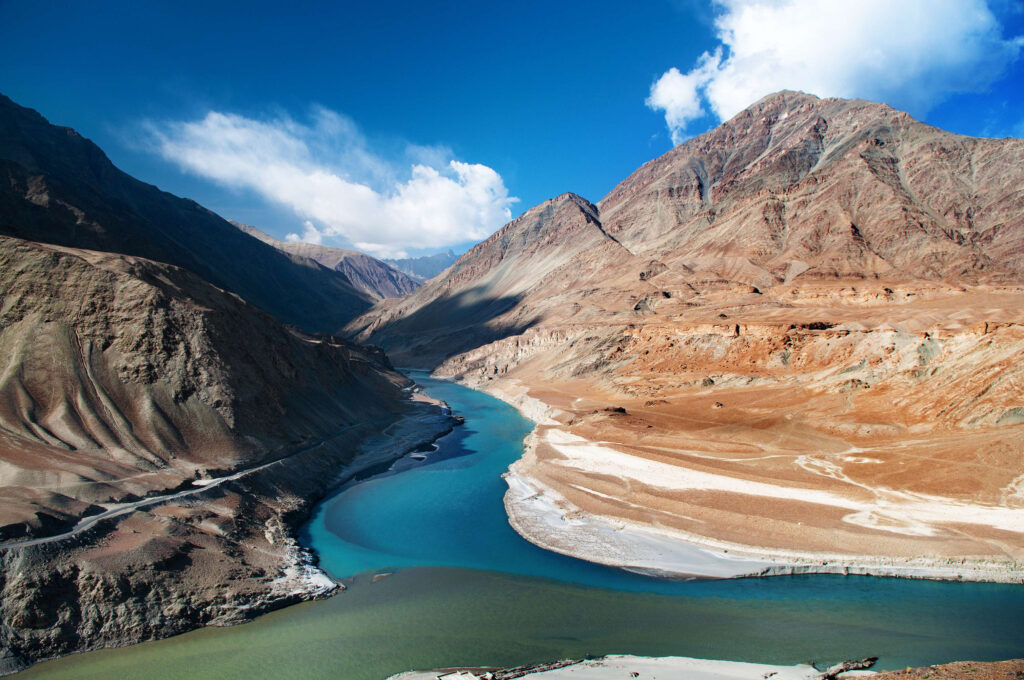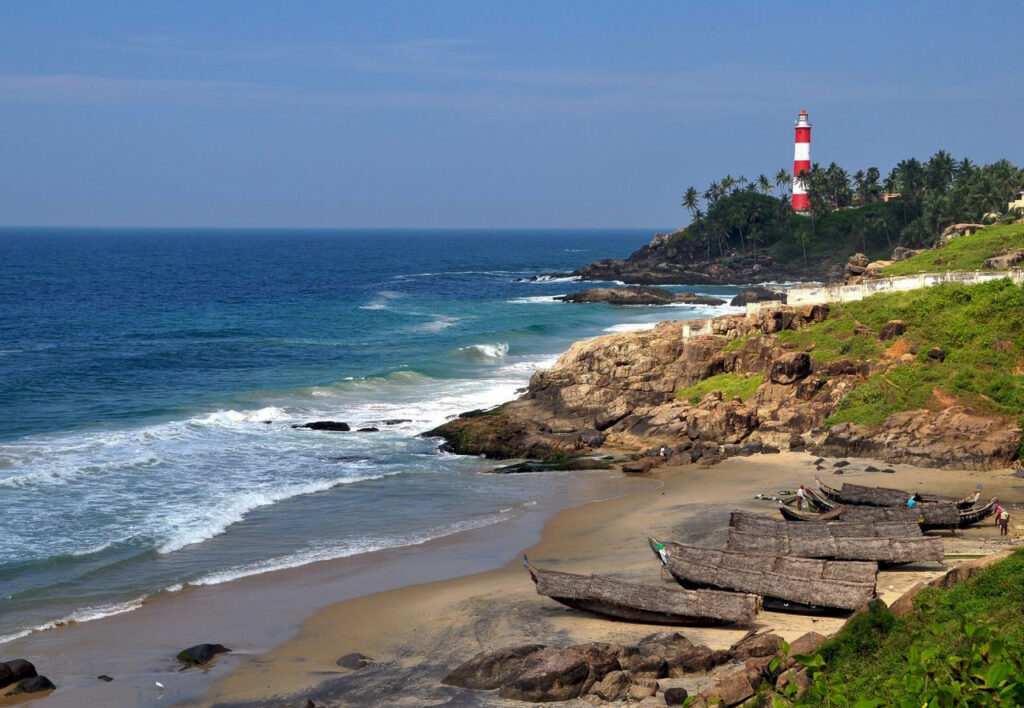Visiting Ayodhya is a journey through the pages of history and a pilgrimage to a city deeply entrenched in the religious and cultural tapestry of India. Ayodhya, situated on the banks of the sacred Sarayu River in the northern state of Uttar Pradesh, holds immense significance for Hindus and has been a focal point of religious and historical discussions for centuries. One of the most famous attractions in Ayodhya is the Ram Janmabhoomi, believed to be the birthplace of Lord Rama, a respected deity in Hinduism. here are top 10 Places To Visit In Ayodhya once in life.
Also Read : Ayodhya Ram Mandir : Timing, History & Everything https://www.yourvacationtrip.com/ayodhya-ram-mandir-timing/
Places To Visit In Ayodhya
1. Ram Janmabhoomi : Ayodhya Ram Mandir :-
Hindus believe that Shri Ram was born in Ayodhya and there was a grand temple at his birthplace, which was demolished by the Mughal invader Babar and a mosque was built there. ayodhya Ram Janmabhoomi is must visit place in ayodhya.

There was a long movement under the leadership of Rashtriya Swayamsevak Sangh and Bharatiya Janata Party to free this place and build a new temple there. On 6 December 1992, the disputed structure was demolished and a temporary temple of Shri Ram was built there.
Address: Sai Nagar, Ayodhya, Uttar Pradesh 224123
Ayodhya Ram Mandir Timing :-
| Morning Darshan | Time |
|---|---|
| Monday to Saturday | 7:00 AM to 11:30 AM |
| Sunday | 6:00 AM to 11:30 AM |
| Evening Darshan | Time |
|---|---|
| Monday to Saturday | 2:00 PM to 7:00 PM |
| Sunday | 2:00 PM to 7:30 PM |
2. Shri Hanuman Garhi Mandir :-
Located in Uttar Pradesh, Hanuman Garhi is a Hindu temple dating back to the 10th century. It is one of the most significant temples in the city of Ayodhya, along with Nageshwar Nath and other notable temples. The Bairagi Mahants of the Ramanandi Sampradaya and Nirvani Akhara are in charge of this temple.

Hanumangarhi’s beginnings date back to the 18th century, when Abhayaram Das received the first land grant under Saadat Khan’s rule (1722–1739 CE). Subsequent monarchs such as Safdarjung and Shuja-ud-daulah provided extra revenue land grants to aid in the development of the shrine. However, Diwan Tikait Rai oversaw the building of the temple in 1799 CE, during Asaf-ud-daulah’s rule.
Ram Janmabhoomi is not far from the Hanuman Garhi shrine. The Awadh Nawab defended the temple against Sunni invaders in 1855. According to historian Sarvepalli Gopal, the conflict in 1855 concerned the Hanuman Garhi temple rather than the Ayodhya temple.
Address: Hanuman Garhi, Sai Nagar, Ayodhya, Uttar Pradesh 224123
3. Kanak Bhawan :-
Kanak Bhawan is to the north-east of Ram Janmabhoomi and one of the best place to visit near ayodhya ram mandir, Ramkot in Ayodhya. Kanak Bhawan is one of the finest and famous temples of Ayodhya. It is believed that this building was gifted to Goddess Sita by Queen Kaikeyi immediately after her marriage to Lord Shri Ram. This is the private palace of Goddess Sita and Lord Rama. According to beliefs, after the original Kanak Bhawan fell into disrepair, it was rebuilt by Shri Krishna himself in the Dwapar era.

This temple was intended to be a massive palace. This temple’s architecture is reminiscent of the exquisite palaces found in Rajasthan and Bundelkhand. Its history was first acknowledged during the Treta Yuga when Shri Ram’s stepmother gave it to his wife Sita as a present following their marriage. It was repeatedly repaired and renovated as it deteriorated and was eventually destroyed. Kush, the son of Ram, completed the first reconstruction during the early Dwapara Yuga.
Address: Tulsi Nagar, Ayodhya, Uttar Pradesh 224123
Kanak Bhavan Ayodhya Timings :-
| Morning Hours | Evening Hours | |
| Summer | 8:00 am – 11:30 am | 4:30 pm – 9:30 pm |
| Winter | 9:00 am – 12:00 pm | 4:00 pm – 9:00 pm |
Kanak Bhavan Ayodhya Aarti Timings :-
| Aarti Timings | |
| Summer | 8:00 am, 11:30 am, 7:00 pm, 9:30 pm |
| Winter | 8:30 am, 12:00 pm, 6:30 pm, 9:00 pm |
4. Dashrath Bhawan :-
King Dashrath, the king of Ayodhya and the father of Lord Sri Ram, originally lived in Dashrath Bhavan, which is situated in the center of the city in Ramkot Ayodhya, Faizabad. Dashrath Mahal, often referred to as Bada Asthan or Badi Jagah, is home to exquisite shrines dedicated to King Ram.

This charming palace has a beautifully painted entryway and is thought to have been the home of King Dasharath’s capital and the childhood home of Lord Rama. Monks in saffron robes are reciting mantras, singing, and dancing within the palace.
The Dashrath Bhavan, albeit smaller than a palace, is undoubtedly a draw during celebrations like Ram Navami, Karthik Mela, Diwali, Ram Vivah, and Shravan Mela.
Address :- Sai Nagar, Ayodhya, Uttar Pradesh 224123, India
5. Sri Nageshwarnath Temple :-
The pride of Ayodhya, Nageshwarnath Temple, is a popular tourist destination in Ayodhya. Lord Shiv is the temple’s presiding deity. One of the several temples in the holy city of Ayodhya is the Nageshwarnath Temple, which epitomizes India’s rich cultural heritage. The Nageshwaranath Temple serves as another example of how different sects have historically coexisted peacefully and prospered alongside one another since ancient times. In Hindu India, the concept and practice of what is now called secularism was known as “Sarva Dharma Sambhav.” The ancient historical city of Ayodhya, where Lord Ram was born, is highly revered in Hindu religious texts and is a well-known pilgrimage destination.

Numerous cultural and religious landmarks in the city had been destroyed by the merciless Muslim conquerors and the passage of time. Under the Gupta period, Ayodhya received the attention it deserved. King Chandragupt Vikramaditya made significant contributions by renovating Ayodhya’s historical and sacred sites. It was him who also repaired the Nageshwarnath Temple. Within the religious community, Baba Nageshwaranath is seen as the identity of Ayodhya, with followers traveling from all over the nation to receive divine blessings. An other factor contributing to Ayodhya’s significance is its ancient Shiva temple.
Address :- Nageshwarnath Temple, Near Ramkot, Ayodhya, Uttar Pradesh
6. Tulsi Smarak :-
One of Uttar Pradesh’s top tourist destinations is the Tulsi Smarak Bhavan Museum, located in Ayodhya, the birthplace of Lord Rama. The 1969 establishment of the Tulsi Smarak Bhavan Museum was devoted to Goswami Tulsidas. Renowned Hindu poet Tulsidas wrote the epic Ramacharitramanas and the Hanuman Chalisa. Continuing, this well-known museum in Ayodhya is home to a sizable collection of Tulsidas’ literary works.

In addition to this, the museum is renowned for holding religious talks, prayer gatherings, and devotional concerts. An additional research facility called Ayodhya Shodh Sansthan is located within the Tulsi Smarak Bhavan complex. In addition, a library with an excellent display of Ramayana artwork and crafts as well as a recitation of the Rama Katha are included in this must-see location in Ayodhya. Beyond all of this, the year-round Ram Leela dramatization is one of the Tulsi Smarak Bhavan Museum’s main attractions. Every day between 6:00 and 9:00 p.m., it is carried out.
Address :- New Colony, Ayodhya, Uttar Pradesh 224123, India.
7. Ram Katha Park :-
A lovely park with well-kept lawns and outdoor theaters is Ram Katha Park in Ayodhya. Its large expanse of ground is used for a variety of events, including dance, poetry, katha recitals, cultural shows, religious programs, and devotional programs.

Ram Katha Park is utilized as an adult leisure garden or as a playground for children on weekday evenings when there are no events. Additionally, it encourages national and international artists to display their talents and supports pop culture events. It has grown to be a popular choice since the spacious amphitheater provides a break from the busy and claustrophobic municipal halls.
Address :-316/412, 316/412, Sector 5, Dhoomanganj, Transport Nagar, Allahabad – 211011
Ram Katha Park Timing :-
6:00 AM – 7:00 PM
8. Mani Parvat Temple :-
The location of the Mani Parvat Temple is in Ayodhya. According to the Ramayana, Lord Hanuman healed Lakshman, who had become injured in a battle via Meghnad, by uprooting a whole mountain that had the revitalizing sanjeevani booti. According to legend, a portion of the mountain fell near Ayodhya. The hillock or mound is referred to as Mani Parbat. It is situated adjacent to another mound called Sugriv Parbat. Mani Parbat’s summit is 65 feet high.

There are numerous shrines located on the hillside. You can enjoy a fantastic view of the Ayodhya metropolis and the surrounding areas by standing atop Mani Parbat. It is thought that Lord Buddha spent six years at Ayodhya, where he delivered his teachings on the Law of Dharma from Mani Parbat. The stupa built by Emperor Ashoka is also carried by the parbat. Also located close by is a medieval Buddhist monastery. The base of the mound is home to a Muslim cemetery.
Address: Kami Ganj, Ayodhya, Uttar Pradesh 224123
9. Guptar Ghat :-
Guptar Ghat is a sacred place in Faizabad, close to Ayodhya, and is located on the banks of the river Sarayu, also called Ghaggar. This ghat, which has steps going to the holy river, used to be next to the Company Gardens, a colonial area that is now called the Gupta Ghat Van.

It is said that Lord Ram, the Hindu deity, pondered here and performed the “Jal Samadhi” in the river. Then, as an incarnation of Lord Vishnu, he gained “Baikuntha” and ascended into heaven.
Popular temples in this area include the Sita-Ram temple, the Narsingh temple, and the Chakrahari shrine. Modern facilities are also available at the Guptar Ghat, which was renovated in the 1800s and is still being updated by the UP Government.
Address: Faizabad Cantt, Faizabad, Fatehpur Saraiya Manjh, Uttar Pradesh 224001
10. Treta Ke Thakur :-
The Treta Ke Thakur Temple, located in Ayodhya along the Naya Ghat, is home to a number of idols, including those of Lord Ram, Sita, Lakshman, Hanuman, Bharat, and Sugreev. One single black sandstone is alleged to have been used in the sculpture of these figures.

Treta Ke Thakur is thought to have been built 300 years ago by the Kullu monarch of that era. This building is supposed to be located on the exact spot where Lord Rama performed the well-known Ashwamedha Yagna. Ahilyabai Holkar, the Maratha queen at the period, substantially renovated the temple in the 1700s.
It only opens to the public on the day designated as the Ekadashi once a year. In the Hindu calendar, this day is marked on the eleventh day of the Shukla Paksha in the month of Karthika. On this day, vibrant celebrations and treasured cultural rituals are observed.
Address :- Ayodhya, Uttar Pradesh 224123, India.
Hotels near Shri Ram Mandir :
Here is top 5 best hotel near ayodhya ram mandir for stay





